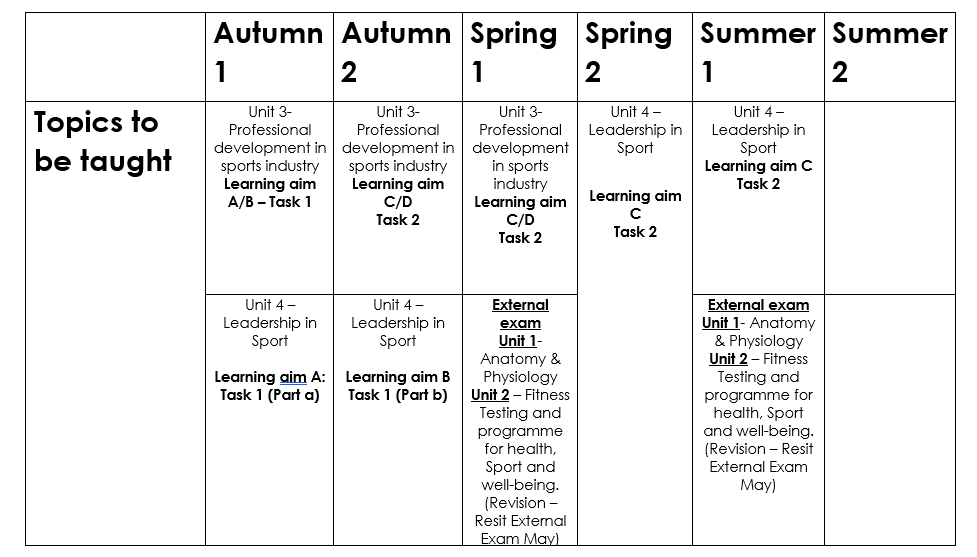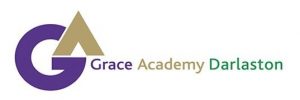Physical Education Curriculum Intent
At Grace Academy Darlaston, our aim is to ensure all children enjoy and are engaged in Physical Education and Sport. Through Physical Education we aim to develop the pupils’ knowledge, skills and understanding, so that they can perform with increasing confidence and competence in a range of physical activities.
We aim to improve health, well-being, promote active participation and stimulate a passion for lifelong learning in the aim to fulfil their potential. We aim to ensure that the pupils experience of Physical Education is not only positive and motivating, but also challenges misconceptions toward a healthy active lifestyle ensuring this understanding is firmly embedded in our curriculum.
Year 7
Introducing the secondary PE curriculum which builds on and enhances previous KS2 learning. From this, confidence around core physical skills and basic knowledge and understanding of rules through active participation in various sports. The introduction of assessment strands starts to develop deeper thinking and further increases the development of foundational skill which supports the expansion of physical literacy.

Year 8
Continuing on from the introduction of assessment and development of foundations in Year 7, Year 8 will start the process whereby they broaden and complement the basic knowledge acquisition of skills, rules and regulations. Tactical, strategical and analytical knowledge will begin to be introduced into a practical setting enabling the start of increasing confidence and articulation of oracy in PE.

Year 9
Year 9 will continue to extend physical and theoretical competency in sports, fitness and participation. Through the varied sporting activities on offer, alongside the assessment strands, independence, as well as the increased ability to effectively evaluate performance will be encouraged further. The application of tactics and strategy with increased confidence in leadership skills, starts to form links with the love of physical activity and promotion of physical, mental & emotional wellbeing to positively influence lifelong learning in Physical Education. Links to KS4 examination criteria in BTEC is threaded in to practical lessons to broaden access for further opportunities in Sport.

KS4 Core PE
The curriculum extends by introducing the cultural capital of good health and well-being through the increased participation in sport and physical activity. Students will take part in a wider range of activities with the aim to broaden their experience and opportunity to help continue a healthy lifestyle when leaving secondary education.


BTEC Level 1/Level 2 Teach award in Sport – Pearson. 60% Coursework split between 2 Components each worth 30%. 40% External exam – Component 3 – Developing Fitness to Improve other participants performance in sport and physical activity ( 1 hour 30 Minutes – Total marks 60)
YEAR 12
KS5
Our Year 12 & 13 pupils have the opportunity to complete the BTEC Level 3 National Extended Certificate in Sport. This course follows the Pearson specification and is equivalent in size to 1 A Levels. The course covers a range of topics which include: researching the different jobs available in sports industry and understanding how you would go about gaining a job within this sector, an detailed analysis of how the systems of the body work individually and cooperatively when at rest and whilst exercising. Alongside these you will also look at how to develop training programmes and understand how lifestyle factors affect your health as well as understand how to structure and lead a sports session.
Pupils will have 2 external exams each which allow 3 attempts to gain the best grade.
Unit 1 – Anatomy and Physiology (1 hour 30 Minutes – Total marks 80)
Unit 2 – Fitness Training and Programming for Health and Sport Welling (2 Hours 30 Minutes – Total marks 60)
YEAR 12

YEAR 13

BTEC Level 2
In KS4 students study the BTEC Level 2 offering. Within the teaching of the course we aim to develop an academic understanding of the effects of physical activity on an individual’s well-being. This further builds on the KS3 physical components of the subject, allowing for the transfer of knowledge from a practical setting to a theoretical one.
Units have been sequenced in order to interleave prior knowledge between units. The “Fitness testing and training” unit builds on the fitness strands completed in KS3 which highlights the key components of fitness and their application to sporting examples whilst developing training knowledge that could be used in later life. The “Practical Sport” unit underpins the understanding of analysis of performance and evaluation of skills deepening the use of higher order thinking. This incorporates the knowledge, concepts and physical skills embedded in the KS3 core curriculum. The final unit “The Body in Action” provides an anatomical approach to the effects of exercise on the body, allowing developments in cross curricular links with Science, as well as demonstrating the integral part physical health will play in a student’s life.
The vocational route selected in the department allows for a range of assessment styles which suit the needs of our students. This is complemented by KS4 core PE which continues to develop their physical ability and understanding of physical activity for lifelong learning and enjoyment.
BTEC Level 3
KS5 students study the BTEC National Level 3. The external units provide an opportunity to broaden understanding of anatomical and physiological effects on the different systems in the body and how they link to sporting performance. This then provides a platform to link to the health and fitness industry to give students the chance to use knowledge and understanding to provide bespoke fitness training programmes and nutritional advice. Internally assessed coursework units allow students to focus on how this course provides professional development in the sports industry and foundations for the future. This continues as an extension of prior learning in BTEC level 2 and in KS3 core PE.

